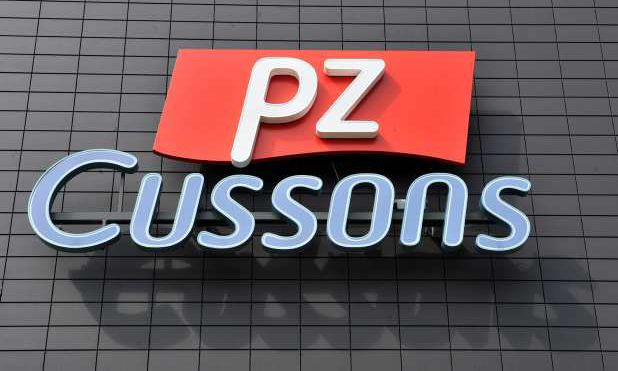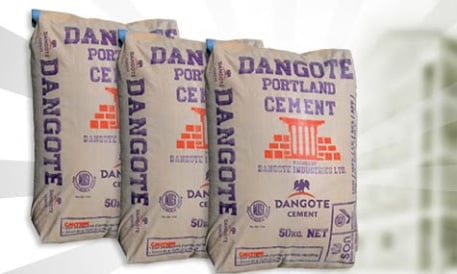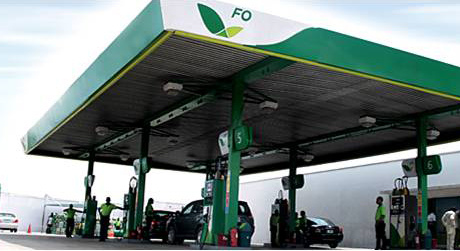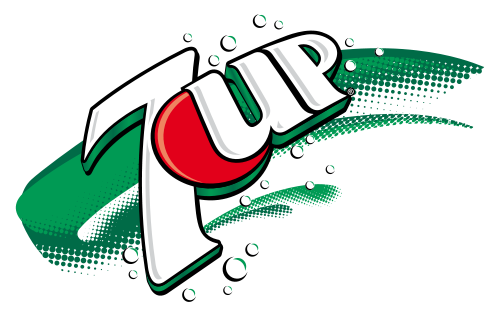Conglomerates, which comprise mostly the long established blue chip names, have lost colour as well as status. These household names normally have the advantage of diversified operations – using highly growing markets to compensate for slowly growing areas and thus maintain overall stability in earnings growth.
This operating advantage isn’t just working out that simply for the operators here anymore. Each market segment seems to present sufficient challenges within it, making it almost impossible for any line of operation to counter the weaknesses elsewhere. The blue chips that used to provide shelters of safety in troubled equities markets now make a dismal commentary of earnings disappointments.
Given the operating state of conglomerates last year, it has become doubtful if diversified operations are a source of strength or weakness. Apparently, more of their operating fronts turned in losses than profits in 2015, which undermined the few strong operating lines. The operating records of conglomerates, as shown in the interims, fluctuated virtually in the same manner as single market-focused companies.
Only the operators with low interest payment burden can be expected to defend even their preceding year’s fallen profits in the 2015 full year results being expected. In the face of general inability to grow sales volume, the otherwise blue chips are showing the per share earnings records of penny stocks.
Advertisement
Conglomerates Sector: 3rd Quarter Earnings Performance
| Company | Turnover Nm | Net Profit Nm | Net Profit Margin % | EPS
K |
Revenue Growth [y-o-y] % | Net Profit Growth [y-o-y] % |
| AG Leventis Nig | 8,817 | 152 | 1.7 | 13 | +5.5 | -59.4 |
| John Holt | ||||||
| PZ Cussons | 14,953 | 428 | 2.9 | 11 | -0.4 | -33.3 |
| SCOA | 3,810 | -421 | 11.0 | -65 | – | – |
| Transcorp | 30,425 | 5,886 | 19.3 | 7 | -3.1 | -28.8 |
| UACN | 54,602 | 963 | 1.8 | 32 | -9.8 | -79.4 |
| Unilever | 42,699 | 141 | 0.3 | 4 | -2.1 | -92.3 |
AG Leventis Nigeria
AG Leventis Nigeria recorded a decline of 2.2% in sales revenue to N11.79 billion at the end of 2014 and its after tax profit fell by 63.4% to about N156 million during the year. The company reported an improvement of 5.5% in turnover year-on-year at the end of the third quarter of 2015 and a flat growth in revenue looks likely for the company at full year.
After tax profit dropped by 59.4% year-on-year in the third quarter but is standing close to the full year figure last year. This is in view of the fact that the company’s after tax profit of N374 million at the end of the third quarter last year dropped to N156 million at the end of the year. Despite the profit drop in the third quarter therefore, the company is expected to achieve a recovery of up to 31% at the end of the year if the third quarter growth rate is sustained.
Advertisement
John Holt
John Holt closed the 2014 operations with a decline of 7.6% in turnover to N2.81 billion but registered one of the biggest profit advances in the year at 555.6% to N591 million. The company’s auditors qualified the company’s financial report for the year stating that “these conditions indicate the existence of material uncertainty which may cast significant doubt about the company’s ability to continue as a going concern”.
The company did survive in 2015 with its full year result showing an accelerated drop of close to 14% in turnover at N2.42 billion as at the end of its financial year in September. A loss of N254 million occurred in the year, which was caused mainly by an exchange loss of N528 million. The auditors still doubt the ability of the company to continue as a going concern.
PZ Cussons
PZ Cussons lost profit for the second year at the end of its 2015 financial year ended May and it is headed for yet another profit drop in its current financial year ending May 2016. The company lost one-third of the after tax profit on year-on-year basis at the end of its first quarter operations in August, which extended to a drop of 46% at the end of the second quarter in November. Full year earnings report in 2015 showed an accelerated drop in profit – which is speeding up in the 2015/16 financial year.
The company’s weakening profit capacity reflects its inability to grow sales revenue for the fourth year running. Turnover went down by 3.3% to N30.62 billion at the end of the second quarter. The company has not been able to push sales revenue reasonably above the figure it posted in 2012 and the revenue weakness has continued to register adversely on profit performance.
Advertisement
Given the inability to grow sales revenue, the company’s profit capacity has continued to weaken under rising costs. The company is able to keep all other major costs under control except interest expenses, which soared by about 507% to N303 million at the end of the second quarter. The company has lost profit margin from 4.6% in the second quarter of last year and from 6.3% at full year to 2.5% at the end of the second quarter of the current financial year.
SCOA
SCOA improved sales revenue by 3.4% to N6.44 billion in 2014 but achieved a profit advance of 63.6% to N179 million during the year. The profit growth came from a tax credit of N91 million without which the company would have reported a profit drop. The company’s business is under pressure from rising cost of sales and finance charges remain relatively large.
Revenue growth was constrained in 2015 and the loss position the company managed to escape from in the preceding year occurred. Based on the growth rate in the third quarter, the company is expected to close the 2015 operations with a drop of about 20% in turnover while the loss position in the third quarter is likely to follow it to full year.
Transcorp
Transnational Corporation of Nigeria [Transcorp] lately actualized new investments in power, oil and gas and agriculture, which saw a leap of 120% in revenue in 2014 – the strongest growth in sales volume since 2009. That didn’t prevent a fall of about 53% in after tax profit in that year. In 2015, the company recorded a decline of 3.1% in sales revenue at the end of the third quarter and the accelerating momentum seen in the past two years looks likely to be broken in 2015. The full year outlook indicates a flat growth on the N41.34 billion sales revenue the company posted in 2014.
Advertisement
There is a chance that the company will see a profit rebound in the final quarter as well as a possibility that it might not. At the end of the third quarter in 2014, Transcorp appeared to be on the way to posting the biggest profit ever in its operating history. The optimism however faded at full year when profit fell from N8.26 billion in the third quarter to N3.30 billion at the end of the year. Whether the final quarter disappointment will repeat itself this year is the caution on Transcorp.
After tax profit amounted to N5.88 billion at the end of the third quarter, a drop of 28% from the N8.26 billion the company posted in the same period last year. It is however 78% above the full year profit figure in 2014. If the third quarter growth rate has been maintained, Transcorp may report a profit rebound of as much as 140% at the end of 2015. A rebound in profit margin from 8.0% at the end of last year to 19.3% at the end of the third quarter was the major operating strength for the company in 2015.
Advertisement
UACN
UACN has grown profit every year in the past five years but the company looks set to fall from its profit peak in 2015. The second and third quarter operations of the conglomerate ended in losses, which lowered its profit from N1.68 billion in the first quarter to N963 million in the third. There is operating pressure from both sides of sales revenue and profit and the company’s diversified operation is no longer able to guarantee stable growth in revenue and profit. Declining revenue against rapidly rising operating expenses explains the company’s loss of considerable profit capacity in 2015.
Sales revenue went down by close to 10% in the third quarter, as business activity remained generally subdued. The full year outlook indicates that sales revenue could drop by a wider margin of 13% at the end of 2015 against an increase of 8.8% in 2014.
Advertisement
The critical factor that undermined the company’s profit capacity in 2015 is distribution/administrative cost, which rose by 29% against the 10% drop in sales revenue during the review period. The company devoted 19% of sales revenue to this expenditure line in the third quarter compared to 13.2% in the same period in 2014.
After tax profit fell by 79% to N963 million year-on-year at the end of the third quarter, as net losses of N638 million and N75 million occurred in the second and third quarters respectively, cutting profit below the first quarter figure. Based on the growth rate in the third quarter, UACN may post just a small fraction of its preceding year’s profit figure at the end of 2015.
Advertisement
Unilever Nigeria
Unilever Nigeria is headed for another major drop in profit in 2015 after it lost nearly one-half in its preceding year’s profit at the end of 2014. The consumer goods manufacturer closed the third operations in September with a crash of 92.3% in after tax profit year-on-year. A loss occurred in the second quarter, which almost wiped off the profit the company reported in the first quarter. The company’s profit had dropped for the second year in 2014 to the lowest mark in six years and a far more rapid fall is expected from the 2015 operations.
Inability to grow sales revenue and rising finance charges are responsible for the dwindling fortunes of the conglomerate. Sales revenue declined by 2% to N42.70 billion year-on-year at the end of the third quarter but a moderate growth of about 5% still looks likely for the company at full year. The company is therefore using increasing proportions of revenue to meet rising costs.
Unilever reported an after tax profit of N141 million at the end of the third quarter, which is a small fraction of the over N1.82 billion after tax profit the company earned in the same period in 2014. The revenue that was used to build up profit for shareholders in 2014 was claimed by creditors by way of interest charges in 2015 as well as rising cost of sales. Finance charges doubled to nearly N2.4 billion at the end of the third quarter.
Based on the growth rate in the third quarter, Unilever may suffer a drop of about 92% in 2015 from the profit figure of N2.41 billion it posted in 2014. The company maintained profit growth every year since 2007 to a peak of N5.60 billion in 2012. A decline of N15.6% in 2013 lowered the company’s after tax profit to N4.72 billion, which accelerated to a drop of 49% in 2014. Profit margin has thinned down to a vanishing point from 4.3% at the end of 2014 to 0.3% at the end of September.







